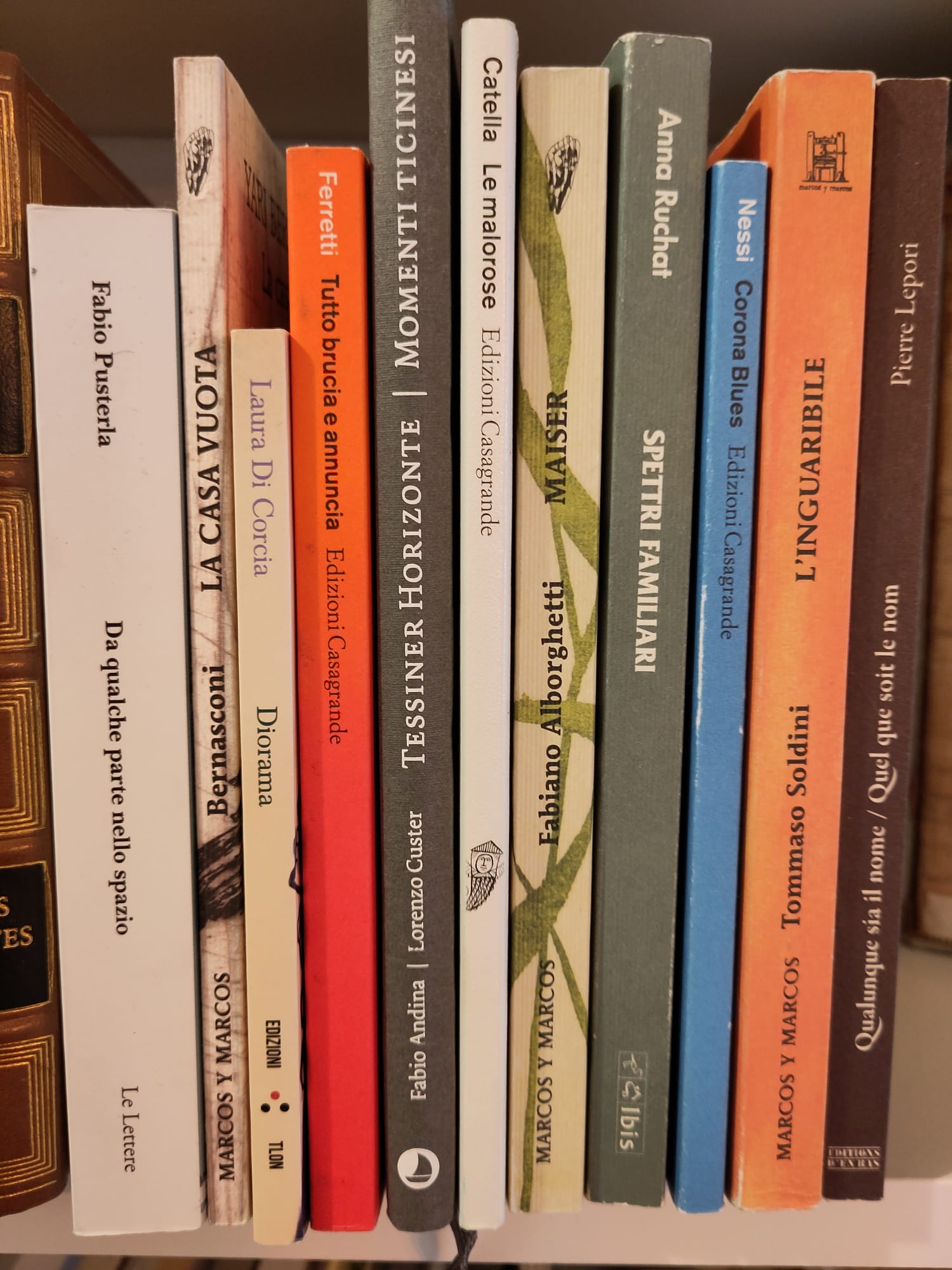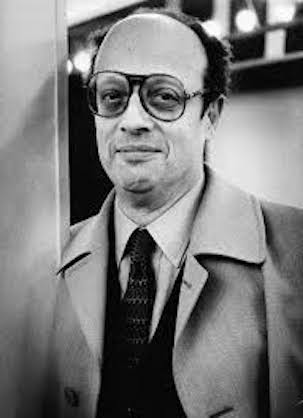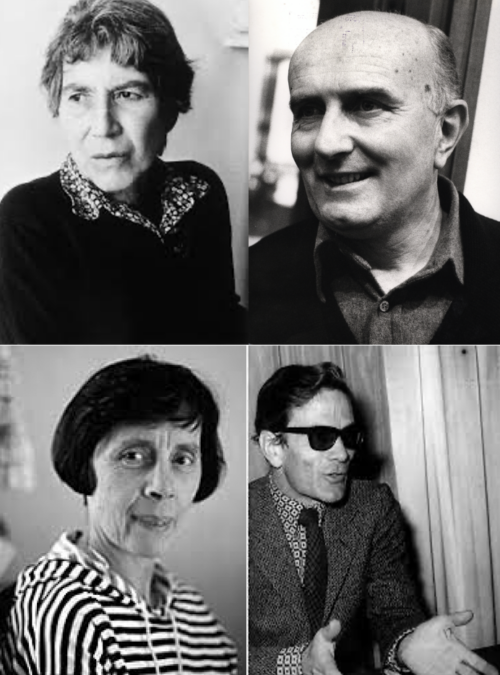Literature in Italian in Switzerland: a dialogue between North and South
Author: Natalia Proserpi

Natalia Proserpi is the editor of the Swiss literary exchange magazine ‘Viceversa’ and of the website www.viceversaletteratura.ch. She is writing a doctoral thesis on translation notebooks in Italy in the second half of the 20th century.
Although small in size and population, Italian-speaking Switzerland is very lively from a literary point of view. In Ticino and the Italian-speaking Grisons, there are numerous authors—an aspect that, compared to other Swiss regions, brings these areas culturally closer to Italy, whose literature is studied in secondary schools and Italian departments across the country’s various linguistic regions. It is precisely this cultural proximity to Italy, as well as linguistic similarities, that have often led to discussions about the most appropriate name for Italian-language literature in Switzerland. Instead of ‘literature of the Italian-speaking part of Switzerland’, it is generally preferred to speak of ‘literature in the Italian-speaking part of Switzerland’, with a difference that, although minimal, invites us to avoid ‘separative meanings’ and to consider it in relation to the broader ‘literary framework of the Italian-speaking world'[1], (Giorgio Orelli and Fabio Pusterla come to mind, who, as Scaffai states, “have always had and continue to have a primary importance in the panorama of Italian poetry tout court, confirmed by the presence of their verses in the most prestigious anthologies and canonical series over the course of their respective generations”[2]). Among these volumes – which, of course, must be considered in relation to their time – the following are worth mentioning Scrittori della svizzera italiana. Studi critici e brani scelti (Bellinzona, Istituto Editoriale Ticinese, 1936), Dizionarietto degli scrittori della Svizzera italiana (Lugano, Edizioni di Cenobio, 1976), the Dizionario delle letterature svizzere (edited by Renato Martinoni, Locarno, Dadò, 1991), Cento anni di poesia nella Svizzera italiana (edited by Giovanni Bonalumi, Renato Martinoni and Pier Vincenzo Mengaldo, Locarno, Dadò, 1997) or Scrittori del Grigioni italiano. Antologia letteraria (edited by Antonio and Michèle Stäuble, Locarno, Dadò, 1998; second updated edition 2008); but also, more recently, projects such as Poesit, a database that records the works of Swiss Italian authors or authors with cultural ties to Switzerland, recently published in the volume Poesit. Repertorio bibliografico dei poeti nella Svizzera italiana (1990-2010) (edited by Raffaella Castagnola and Matteo Viale, Lugano, Edizioni Opera Nuova, 2021), or the anthology Non era soltanto passione. Generazione degli anni ’80 (Lugano, Alla chiara fonte, 2018).
There are also several publishers in Ticino, often small but active in promoting regional literature. Among the most important are Edizioni Casagrande, which is also open to European literature and is well known beyond the borders of Ticino, and Armando Dadò, as well as other publishers who, although small (and sometimes very small), have contributed in recent years to enriching and strengthening the local literary scene: Gabriele Capelli, Alla chiara fonte, Giampiero Casagrande, Salvioni, Fontana, Ulivo, Sottoscala, Pagine d’Arte. There are also magazines that are important for the promotion of literature; among those that are still active, we can mention Cenobio, Quaderni grigionitaliani or Opera Nuova[3].
While many Swiss authors collaborate with Italian magazines and publishers, where a large part of the current literary production is published[4] (a trend that is accompanied, albeit to a lesser extent, by an opposite movement, that of Italian authors publishing in Switzerland), it is also clear that efforts are being made to strengthen the dialogue with literature produced in the rest of Switzerland. There are, in fact, various projects and initiatives aimed at encouraging the crossing of linguistic borders and promoting exchanges, an objective that, although pursued primarily through translation, is also achieved thanks to the existence of numerous multilingual festivals and meetings. The Soletta Literary Days, where the Swiss Literary Prizes are awarded, occupy a prominent place among these, but there are also events in the various regions such as BuchBasel, Zürich liest, ChiassoLetteraria, Lettere dalla Svizzera alla Valposchiavo, Textures, Le livre sur les quais. Supported by organisations and foundations that promote multilingualism and interregional cultural dialogue, these events are increasingly devoted to translation, which plays a central role in Switzerland. Encouraged in particular by the Pro Helvetia Foundation – but also by other institutions that promote the translation of Swiss works into national and international languages: the Fondation ch, the Centre de Traduction Littéraire in Lausanne, the Translators’ House in Looren – translation is indeed the main vehicle for cultural dialogue in the country, with Swiss works being translated in particular.
In French and German-speaking Switzerland, there are various publishing houses that publish books in translation by Swiss-Italian (and to a lesser extent Italian) authors – among them Zoé, La Baconnière, Éditions d’en bas, Cheyne, La Veilleuse, Empreintes, L’Aire, Florides Helvètes; Rotpunktverlag, Limmat Verlag, Caracol, Atlantis; but also, in the Romansh sector, editionmevinapuorger. In the canton of Ticino, there are three main publishers of translations of Swiss works: Dadò, with the series ‘La Libellula’ and above all ‘I Cristalli’, which is entirely dedicated to Swiss literature in translation; Casagrande, which publishes books by Swiss authors in its ‘Scrittori’ series, alongside works from other literatures; and Gabriele Capelli, which in recent years has published various titles from the French-speaking part of Switzerland, thus opening up its catalogue to extra-regional voices[5]. In the field of translation, we should also mention Viceversa letteratura, a journal of literary exchange that plays a central role in promoting dialogue between the different regions. In Ticino, we should also mention the Babel Festival, a literary event linked to both the multilingual magazine ‘Specimen’ and the ‘Alfabeti Babel’ series published by Casagrande.
Situated at the crossroads between North and South, Italian-speaking Switzerland thus oscillates between openness towards Italy (with projects and initiatives aimed at increasing exchanges) and dialogue with the other regions of Switzerland, in a dual confrontation that is not always direct, but which makes it in some ways a unique reality, attentive to cultural exchange and multilingualism.
[1] N. Scaffai, preface to Attraversare le parole. La poesia nella Svizzera italiana: dialoghi e letture, edited by T. Collani and M. Della Casa, Florence, Società Editrice Fiorentina, 2017, p. VII.
[2] Ibid, p. IX-X.
[3] Among the journals that have ceased publication are Bloc notes (1979-2018) and Idra (1990-2001). The latter included a section devoted to translation and aimed to promote dialogue between Switzerland and Italy.
[4] Italian publishers that have published books by Swiss-Italian authors or authors living in Switzerland in recent years include Neri Pozza, Manni, Rubbettino, Effigie, Castelvecchi, Quodlibet, Puntoacapo, Piemme, Ibis, La nave di Teseo, Interlinea, Guanda and Marcos y Marcos, whose series ‘Le Ali’, edited by Fabio Pusterla and Massimo Gezzi, presents various titles related to Italian-speaking Switzerland.
[5] Translations of books by Swiss authors are also published in Italy. Publishers that have published translations in recent years include Sellerio, Adelphi, L’Onda, Mondadori, Marcos y Marcos, Il Saggiatore, Keller, La Nave di Teseo, Guanda, Ibis, Nutrimenti, Valigie Rosse, Solferino, Crocetti, Atmosphere Libri, Joker, Effigie, etc.










